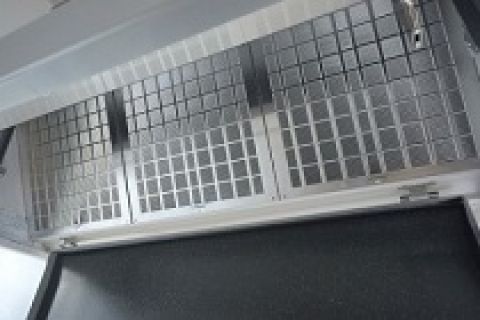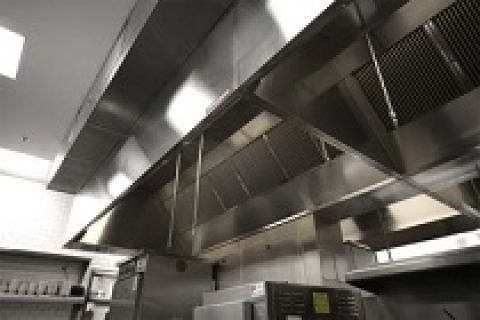Kitchen Gadget Maintenance: The Essential Guide to Cleaning and Upkeep
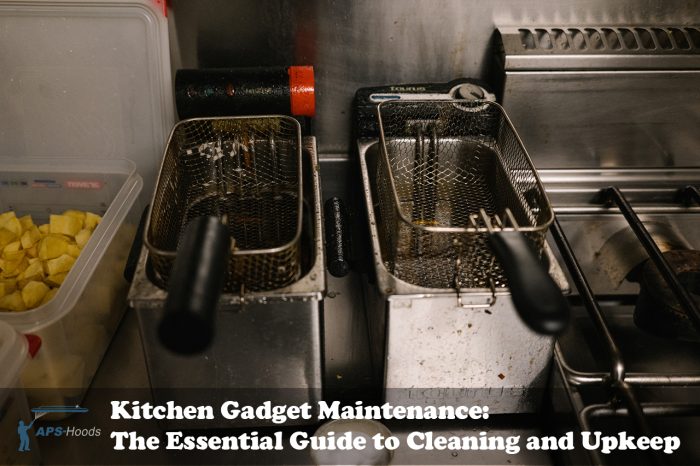
Effective kitchen gadget maintenance is vital for a restaurant’s operation, ensuring cleanliness, longevity of equipment, and food safety. A consistent cleaning regimen not only upholds health standards and customer satisfaction but also safeguards against malfunctions, ultimately contributing to cost savings.
This article provides a thorough overview of the best practices for cleaning kitchen utensils and kitchen appliances, emphasizing the importance of regular kitchen tool maintenance. It offers practical cleaning tips for kitchen tools and underscores the significance of a clean and well-maintained kitchen for the safety and success of a restaurant. For those seeking professional assistance, APS-Hoods in Lakewood, Aurora, Denver, and the Colorado area, offers comprehensive commercial kitchen cleaning services, ensuring that every aspect of kitchen maintenance is handled with expertise.
Embrace the APS-Hoods advantage and serve each dish with pride, knowing your kitchen meets the highest standards of cleanliness and efficiency. Call now to schedule your professional kitchen cleaning today!
The Fundamentals Of Kitchen Gadget Maintenance
Proper care for kitchen gadgets is vital for their longevity, safety, hygiene, and business success. It ensures appliances run smoothly, prevents costly repairs, and mitigates hazards. Key points include:
- Maximizing Performance: Routine tasks like cleaning hacks for kitchen tools, checking connections, and lubrication optimize appliance efficiency and functionality.
- Preventing Repairs: Regular inspections and minor fixes can prevent significant malfunctions and extend equipment lifespan.
- Food Safety: Cleaning and sanitizing kitchen appliances’ surfaces and accurate temperature control are crucial for hygiene and preventing contamination.
- User Safety: Maintenance identifies safety hazards, preventing accidents and injuries in the kitchen.
- Regulatory Compliance: Adherence to safety and performance standards is mandatory for commercial kitchens to avoid penalties.
- Lifespan Prolonging: Maintaining kitchen utensils and proper care and maintenance routines protect the investment in kitchen equipment, ensuring it functions optimally for longer.
Therefore, gadget maintenance is not just a task—it’s an investment in the quality and safety of your kitchen operations.
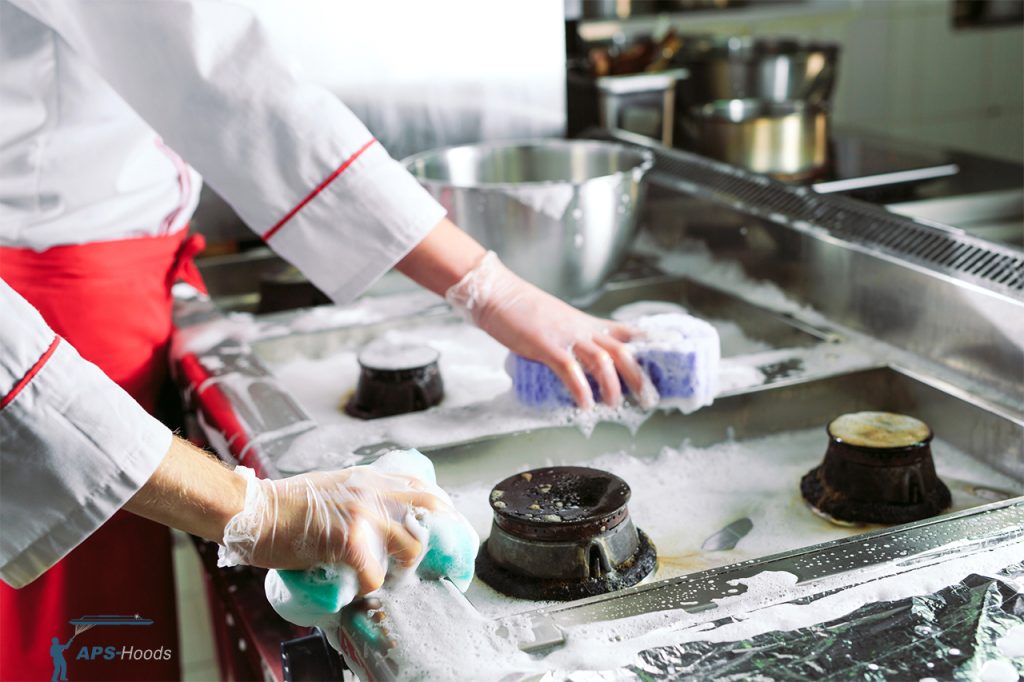
Crafting An Efficient Cleaning Timetable For Kitchen Gadget Maintenance
Experts recommend embracing daily cleaning practices, understanding the benefits of regular maintenance, setting up a monthly deep cleaning routine, and streamlining cleaning processes for optimal kitchen gadget care. Therefore, a well-structured cleaning schedule is key to maintaining kitchen gadgets and ensuring operational efficiency:
1. Daily Practices:
Routine maintenance extends equipment lifespan, reduces unexpected breakdowns, and saves costs. It ensures efficiency, compliance with health regulations, and a positive reputation by preventing contamination and maintaining food safety. So, it’s good to assign specific cleaning tasks to each shift to maintain a consistent level of cleanliness. Here’s an optimized performance schedule tailored for each shift:
Morning Shift:
- Inspect and clean all appliances and surfaces.
- Sanitize high-touch areas like door handles and switches.
- Ensure dishwashers and sinks are clean and ready for use.
Afternoon Shift:
- Clean cooking equipment after lunch service.
- Wipe down preparation areas and cutting boards.
- Check and clean storage areas.
Evening Shift:
- Deep clean grills, stovetops, and ovens after dinner service.
- Sanitize all surfaces and floors.
- Prepare the kitchen for the next day’s service.
2. Monthly Deep Cleaning
Schedule deep cleaning sessions to address areas not covered in daily routines, Like:
• Ovens and Ranges: Conduct a thorough cleaning of both the interior and exterior to ensure they are free of grease and food residue. Also, include the degreasing of exhaust hoods and the detailed cleaning of hard-to-reach areas
• Freezers: Defrost and meticulously clean both the inside and outside, removing any built-up ice and debris.
• Storage Racks and Shelving: Empty the racks and shelves, clean each one thoroughly, and then reorganize the items neatly.
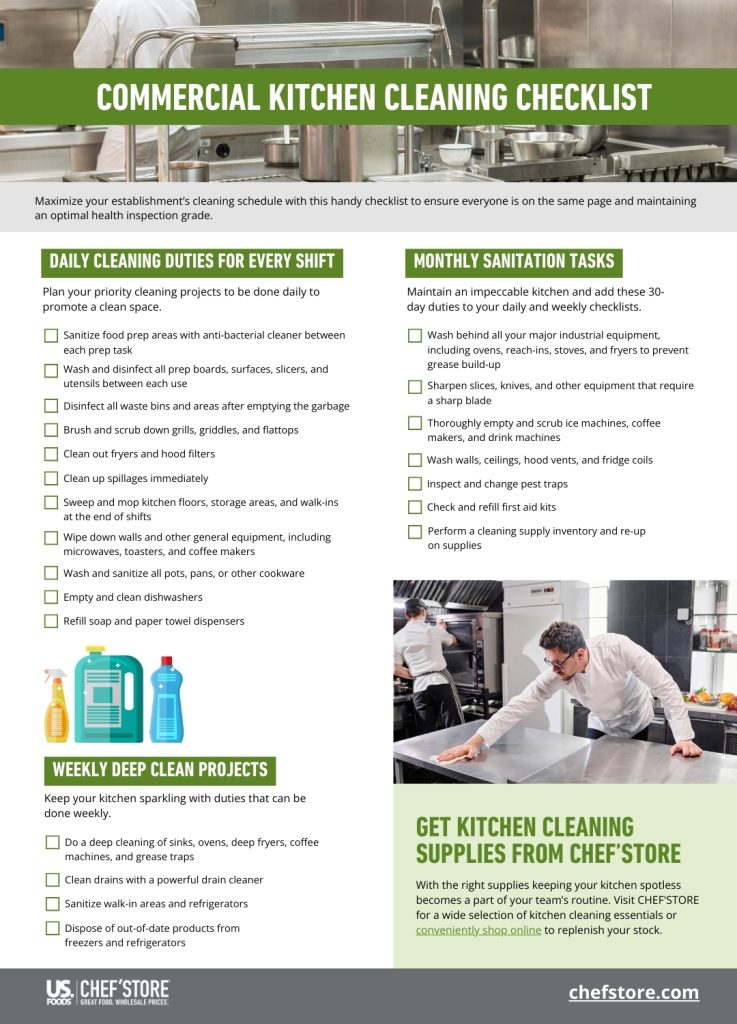
Simplified Daily Cleaning Techniques For Kitchen Gadgets Maintenance
By incorporating these practices into your daily routine, which are Easy ways to clean kitchen gadgets, you can maintain a clean, safe, and efficient kitchen, ensuring that your gadgets serve you well for years to come:
- Use Mild Detergents: Choose gentle, non-abrasive, and safe cleaning products for kitchen gadgets and detergents to clean the kitchen tools without harming their surfaces.
- Soft Cloths and Sponges: Utilize soft materials for wiping down equipment to prevent scratches and surface damage.
- Thorough Rinsing: Always rinse gadgets thoroughly to eliminate any detergent residue that might compromise food safety or flavor.
- Complete Drying: Ensure all items are fully dried to inhibit bacterial growth and protect the equipment’s integrity.
- Regular Inspection: Check for signs of wear and tear or malfunction during cleaning to address issues promptly.
- Disinfection: Use appropriate sanitizers, especially on food contact surfaces, to eliminate pathogens.
- Non-Toxic Cleaners: Whenever possible, use eco-friendly and food-safe cleaners to maintain a healthy kitchen environment.
- Investing in Quality: Choose high-quality stainless-steel equipment for ease of cleaning and durability, ensuring uninterrupted service.
Effective Strategies For Eliminating Kitchen Gadget Stains
Maintaining a spotless commercial kitchen is crucial, and employing effective strategies is key to removing stains from kitchen gadgets and appliances that can compromise both the appearance and hygiene of kitchen gadgets. Discover below the tactical approaches for tackling persistent stains:
• Immediate Action: Swiftly addressing spills and stains is paramount. The longer a substance sits, the more it penetrates the surface, making it harder to remove.
• Appropriate Cleaning Agents: Select cleaning agents that are compatible with your gadgets’ materials. For stainless steel, avoid chlorine-based cleaners; for plastics, steer clear of solvents.
• Soaking Technique: For tough stains, soaking the gadget in a solution of warm water and a suitable detergent can loosen the grime, making it easier to clean.
• Heat Application: Applying gentle heat can help dissolve oily residues. Be cautious to not damage the gadget with excessive heat.
• Regular Deep Cleaning: Incorporate deep cleaning into your maintenance schedule to address areas that regular cleaning might miss, preventing grime build-up.
Tools Recommended For Persistent Residues
• Specialized Scrapers: Utilize scrapers designed for kitchen use to gently lift off hardened substances without scratching surfaces.
• Quality Brushes: Invest in brushes with bristles that are tough on stains but gentle on surfaces, such as nylon for delicate areas and brass for more resilient materials.
• Microfiber Cloths: These cloths can be effective for polishing and removing streaks after the primary cleaning has been done.
• Non-Abrasive Pads: For surfaces that scratch easily, non-abrasive pads can scrub away residue without leaving marks.
For a spotless kitchen that meets the highest standards, don’t hesitate to call APS-Hoods at 800-750-7313. Our professional team is ready to tackle even the toughest stains and ensure your kitchen shines!
Upholding Cleanliness Standards In Kitchen Gadgets
Maintaining high cleanliness standards for kitchen gadgets is not only about aesthetics but also about ensuring food safety and kitchen efficiency. Here’s an expanded approach to managing stubborn stains and maintaining hygiene:
• Sanitization:
Implement a routine sanitization process using approved food-safe chemicals or heat treatments to eradicate bacteria and other pathogens. This step is crucial after cleaning to ensure that all surfaces that come into contact with food are safe for use.
• Inspection:
Regularly inspect kitchen gadgets for any signs of food residue, discoloration, or damage that could become a breeding ground for bacteria. Pay special attention to hard-to-reach areas where grime and germs are likely to accumulate.
• Staff Training:
Educate your kitchen staff on the importance of maintaining cleanliness standards. Provide them with detailed instructions on the correct usage of cleaning agents, the importance of wearing protective gear, and the procedures for sanitizing different types of kitchen gadgets.
• Record Keeping:
Keep records of cleaning and maintenance activities. This not only helps in tracking the cleanliness of gadgets over time but also proves compliance with health regulations.
Industry Kitchens’ Selection for Daily-Use Gadgets
Here are the recommended selections for robust, premium kitchen tools along with their optimal maintenance practices:
• Essential Knives
For precision cutting, a set of sharp, high-quality knives is indispensable. Maintain the sharpness and prevent rust on kitchen utensils by gently washing them with warm soapy water and promptly drying them.
• Measuring Tools:
Digital scales and measuring spoons are vital for accuracy in recipes. Preserve their precision by cleaning with a damp cloth or a gentle wash, followed by a complete dry.
• Cutting Boards:
Plastic and wooden cutting boards serve different purposes and add functionality to the kitchen. Enhance their longevity and ensure hygiene by treating plastic boards with a bleach solution and wooden ones with vinegar.
• Mixing and Prep Bowls:
A variety of bowls are necessary for preparation tasks. Keep them in pristine condition by cleaning with gentle detergents and soft sponges, followed by thorough rinsing and drying.
• Quality Cookware:
Durable pots and pans are the backbone of cooking operations. Ensure consistent cooking results by pre-soaking in warm, soapy water and softly brushing away any food residue.
• Handy Gadgets:
Immersion blenders and similar gadgets save time and effort. Like immersion blenders, maintain their functionality by carefully cleaning with a mild detergent and drying all components after disassembly.
• Dough Scrapers:
Use these to remove dough and other residues from surfaces without causing damage.
• Scouring Pads:
Choose non-metallic scouring pads for tough grime, ensuring they are suitable for the equipment being cleaned.
• Gentle Commercial Cleaning Products:
Select products specifically designed for commercial kitchen equipment.
Understanding Your Kitchen Gadgets
Understanding and caring for your kitchen gadgets not only enhances their performance but also extends their lifespan. Here’s a deeper dive into the essentials of kitchen gadget maintenance:
Familiarization
Know Your Tools and spend time learning about each gadget’s unique functions and components. This insight is invaluable when it comes to cleaning, maintenance, and troubleshooting.
Manual Mastery
Keep the user manuals handy. They are your go-to resource for understanding specific maintenance needs and operational guidelines.
Consistent Care
Establish a daily or post-use cleaning regimen to prevent the buildup of food particles and grease, which can lead to bacterial growth and equipment malfunction.
Gentle Approach
Use soft cloths and sponges with mild detergents to cleanse without scratching or damaging your gadgets. Harsh chemicals and abrasive pads can degrade surfaces and intricate parts.
Technical Care
Troubleshooting is an essential skill in the kitchen, as gadgets can often present various challenges. Understanding these issues and knowing how to resolve them can save time and prevent frustration. Moreover, be mindful of each gadget’s electrical or battery requirements. Unplug or remove batteries before cleaning to avoid electrical hazards.
Manufacturer’s Advice:
Adhere strictly to the cleaning recommendations provided by the manufacturer. This ensures that you’re not inadvertently causing damage that could void warranties or reduce efficiency.
Specialized Care:
Some gadgets may require special attention during certain seasons, such as additional lubrication or protection from humidity.
FAQs About Kitchen Gadget Maintenance:
Q: How Can I Avoid Common Kitchen Cleaning Pitfalls?
A: To prevent common kitchen cleaning pitfalls, start by cleaning from the top and work your way down to avoid soiling cleaned areas. Use separate towels for different tasks to prevent cross-contamination. Lastly, don’t forget regular deep cleaning of the sink to prevent mold growth and odors. Following these steps will help maintain a hygienic kitchen environment.
Q: What Are The Best Practices For Gadget Organization And Storage In A Commercial Kitchen?
A: The best practices for kitchen gadget maintenance and organization include:
• Labeling and categorizing equipment for easy identification.
• Utilizing vertical storage to maximize space.
• Implementing ‘first in, first out’ (FIFO) to maintain freshness.
• Ensuring gadgets are cleaned and sanitized before storage.
• Designating specific areas for different types of gadgets to avoid cross-contamination.
• Using clear storage containers for visibility and non-slip mats to secure items in place.
(For more information and a visual guide on the best practices for gadget organization and storage in a commercial kitchen, watch this informative video.)
Ensuring Culinary Excellence Through Kitchen Gadget Maintenance
Achieving culinary success starts with the diligent upkeep of your kitchen equipment. Regular cleaning and proactive maintenance are essential to ensure appliance longevity and optimal performance. This guide provides the essential practices for kitchen sanitation, crucial for maintaining the highest standards of hygiene and safety in food service.
Partnering with APS-Hoods’ professional services further enhances kitchen operations, ensuring compliance and culinary distinction in the Lakewood, Aurora, Denver, and Colorado areas. Their expertise guarantees that every meal reflects a commitment to quality and excellence.


